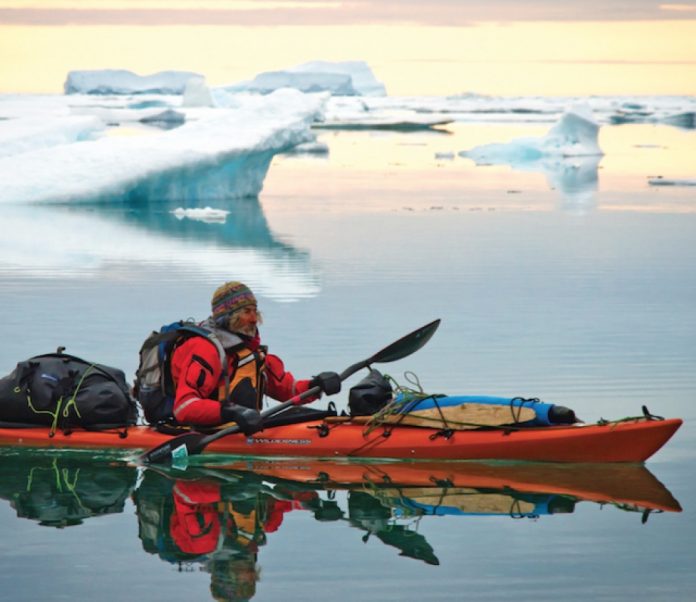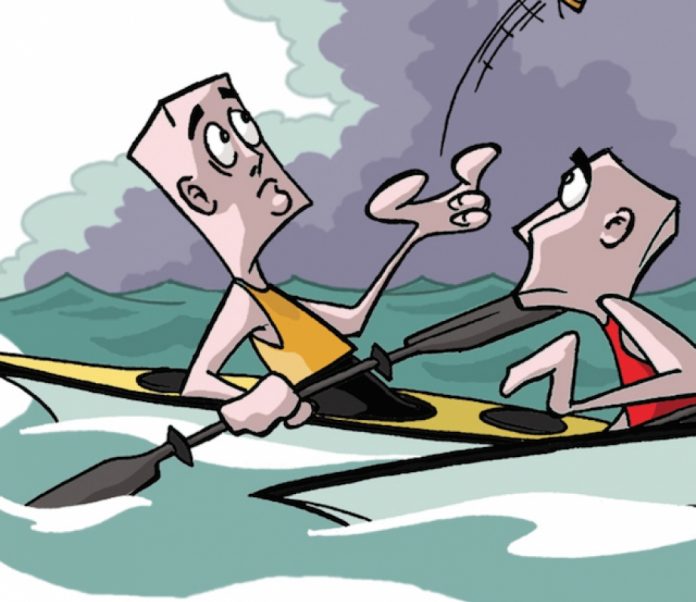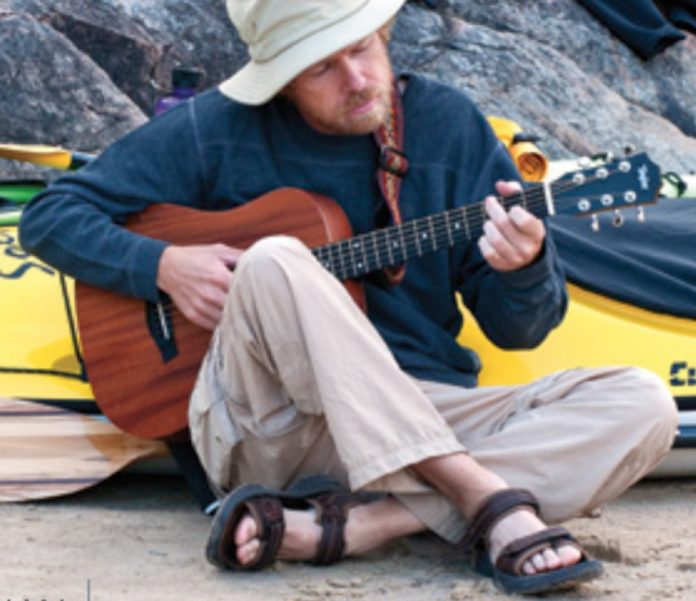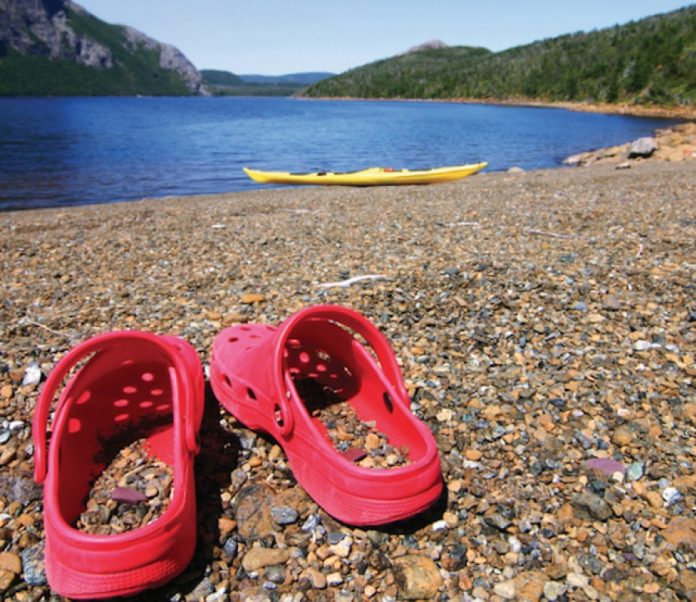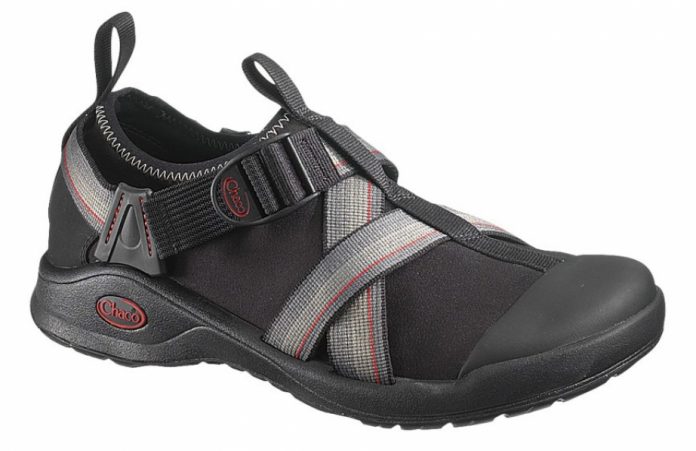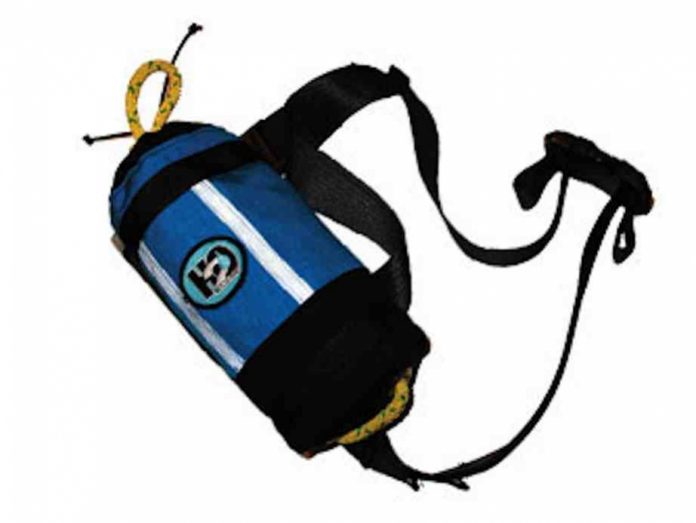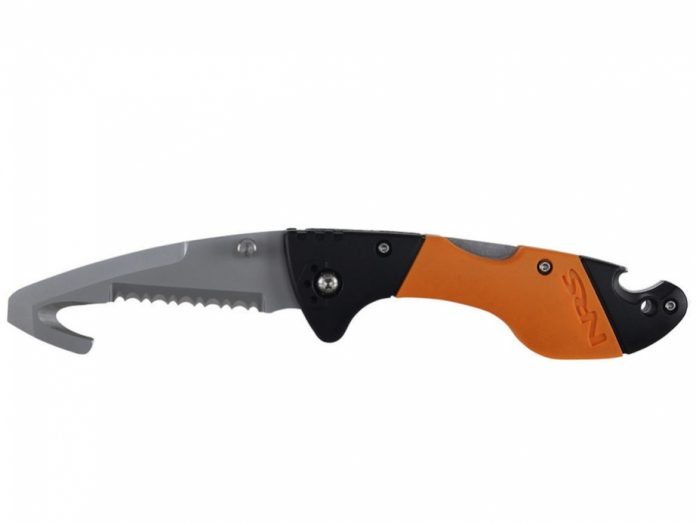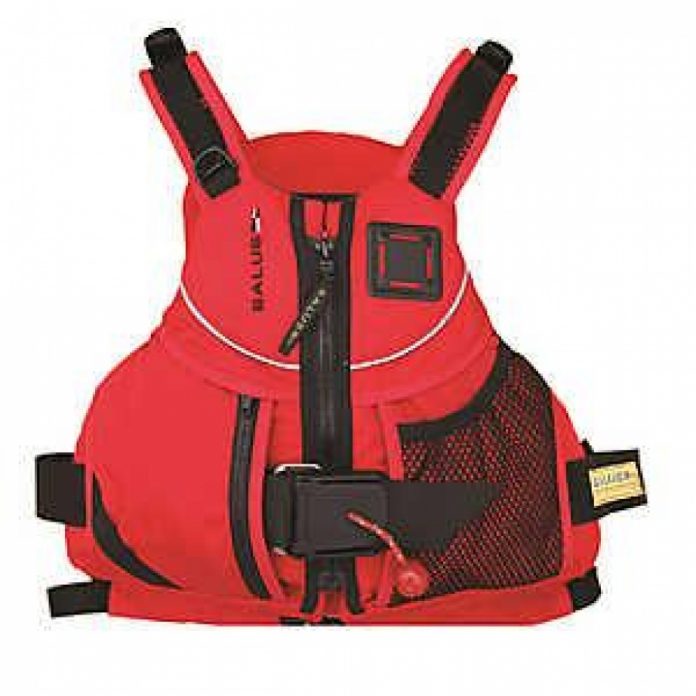There’s a moment in time when trends face a tipping point, destined to either collect dust in the garage rafters or become the norm. Successful designs stand the test of time: think suspension forks on mountain bikes, parabolic alpine skis or short surfboards. Sea kayaking has its own list of enduring innovations that have carried expedition paddlers to the ends of the Earth, redefined what can be accomplished with a double blade and evolved to meet the changing demands of today’s paddlers. Here’s our list of the top seven game changers.
Ocean Playboats
Why surf big, breaking waves in long, unwieldy boats? Because it’s fun, says Brian Day, U.S. sales rep for P&H Sea Kayaks. Sea kayak designers are feeding the rough water frenzy that’s be- come popular in the past five years with a new, easier to paddle genre of pint-sized boat that’s sure to grow as long as adventurous paddlers keep playing in surf zones and rock gardens. P&H has met the demand by creating their 15-foot Delphin, a sea kayak with the planing hull of a whitewater boat that keeps the bow loose and maneuverable, and eliminates the joy-killing propensity of most long boats to pitchpole in steep waves.
“Rough water sea kayaks had been the same for about 20 years,” says Day. “The 16-foot-long sea kayak was the norm. We set out to make something different.”
San Francisco-based sea kayaker and former world surf kayaking champion Sean Morley expects the evolution to continue, with ocean playboats following the whitewater kayak trend, get- ting smaller. “I think something around 13–14 feet would be ideal,” he says. “Sometimes you need a bit of speed to catch big, fast waves or to make that crux move.
“The funny thing,” adds Morley, “is that I learned to paddle on the sea in a 13-foot general-purpose kayak over 30 years ago. With these new boats, it’s like being a kid again.”
Sea Kayak Lite
Take a close look at any kayak manufacturer’s website and you’re sure to notice that many of the boats fall into the 12- to 15-foot range. Current Designs’ creative and marketing director, Jake Greseth, says the brand’s bestsellers are its transitional models, the Vision, released in 2008, and Whistler, updated in 2011. That’s because light touring kayaks meet the needs of the majority of paddlers.
“Why paddle a hulking expedition boat when you could cruise effortlessly in a lighter, easier to store and transport, pint-sized model?” asks Greseth. Of course, good design—in particular, proper fit—and a full suite of features like decklines, adjustable seats, skegs and bulkheads have come a long way in distinguishing these miniature sea kayaks from tubby, less responsive recreational boats. The result has been the dominance of a new class of kayak that’s fun, affordable, comfortable and easy to paddle.
The End of the Ocean Cockpit
Purists scoffed when Welsh kayak designer Nigel Dennis devel- oped a large, keyhole-shaped cockpit for his Romany sea kayak in the early 1990s. Since Ken Taylor took the lines off of a West Greenland kayak in 1959 and formed the archetypical “British- style” sea kayak, small, circular ocean cockpits were a defining feature of all U.K.-built boats. But it didn’t take long for Dennis’ keyhole cockpit to catch on.
His design principle was to come up with something user-friendly. Ocean cockpits may have been traditional, but they were often uncomfortable and less than perfect for quick entries and exits in surf. All the while, the large, oval-shaped cockpits of North American boats didn’t offer enough boat control. The keyhole struck a balance between the two and with advances in neoprene sprayskirts, Washington-based Valley Sea Kayaks sales rep Rob Avery says Dennis’ idea became the norm. With the exception of traditionalists’ requests for the Anas Acuta, the fiberglass replica of Taylor’s Greenland kayak, Avery says he only imports a few ocean cockpit-equipped Valley Pintails and Nordkapps each year.
One Size Does Not Fit All
It took designers a while to figure out that small and large paddlers will have vastly different experiences paddling the same boat. “It used to be that if you were in the middle of the curve you got a boat that fit really well,” says Day. “But if you were on either end you got something that wasn’t fun to paddle.”
Day attributes the advent of different-sized whitewater kayaks to a similar, more recent trend in sea kayaks. Rather than simply lifting or low- ering the deck as they’d done in the past, sea kayak designers are now building entirely different boats for small-, medium- and large-sized paddlers. “We change the boat in all dimensions with the idea of preserving the same performance,” says Day. “We do it right from the outset. The kayak might have the same name, but it came from a different mold.”
The British Empire
All segments of the sea kayaking market are now drawing on the original ideas of Frank Goodman, Derek Hutchinson and other visionaries – features like bulkheads, rubber hatch covers, permiter decklines, recessed fittings and toggles, day hatches and gracefully upswept bows. It was a sign that the trend had become pervasive when many manufacturers began dropping the term “British-style” to describe their skeg boats, and an unspoken testament to the acumen of the early sea kayakers on the other side of the pond.
“These are useful features,” says Greseth, “they look good and are functional. Brit boats are just cool.”
More Surf Ski
Fresh after setting a new speed record for circumnavigating Ireland in 25 days last spring with Cornwall, U.K.’s Jeff Allen, London, U.K.-based sea kayaker Harry Whelan couldn’t say enough about his Rockpool Taran. With an elongated keel line, foot-controlled rudder and plumb, high-volume bow the Tarans far more surf ski than typical British sea kayak; Whelan called it “the biggest change in U.K. sea kayaking.”
Surf ski-shaped sea kayaks already received wide-reaching recognition when Freya Hoffmeister paddled an Epic 18X in her record-setting 2010 Race Around Australia, another low-profile, rudder-controlled boat designed by Olympic racer Greg Barton. Whelan and Allen further demonstrated the rough water pedigree of these long, slender sea kayaks by pushing their limits in strong headwinds, monstrous seas and powerful tidal rips. All the while they maintained a pace that was at least 1.5 knots faster than a traditional expedition sea kayak. “It meant we could paddle about 12 more miles per day,” says Whelan. “On an expedition, that’s significant.”
Greenland Kayaking Goes Mainstream
It used to be that if you wanted an authentic Greenland-style kayak, you were forced to sort through cedar at the lumberyard and assemble your own can- vas-covered craft. In recent years, however, that’s changed thanks to a hand- ful of European manufacturers producing ultra-low volume Greenland boats in composite materials. According to Thunder Bay, Ontario-based vendor and Greenland-style paddle-maker Joe O’Blenis, the trend has expanded beyond cult status.
“Greenland-style has gone mainstream,” says O’Blenis. “More and more people want the gear but don’t want to build their own. It might be that they don’t have the time or space for boat-building, or they think they don’t have the skills. That’s why a market has emerged for manufactured Greenland kayaks.” Where once Valley’s Anas Acuta and Wilderness Systems’ Arctic Hawk were the only option for paddlers looking for composite boats for rolling and traditional-style paddling, manufacturers like Estonia’s Tahe and Norway’s SeaBird have been exporting a wide range of traditional-styled fiberglass, carbon and Kevlar kayaks to appease the North American masses since 2009. O’Blenis describes the typical buyer as a 30- to 50-year-old male or female looking to add a “second or third kayak to their fleet.”
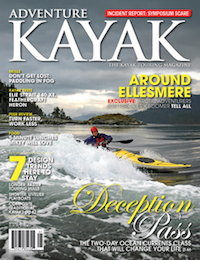 This article first appeared in the Spring 2012 issue of Adventure Kayak Magazine. For more great content, subscribe to Adventure Kayak’s print and digital editions here.
This article first appeared in the Spring 2012 issue of Adventure Kayak Magazine. For more great content, subscribe to Adventure Kayak’s print and digital editions here.




